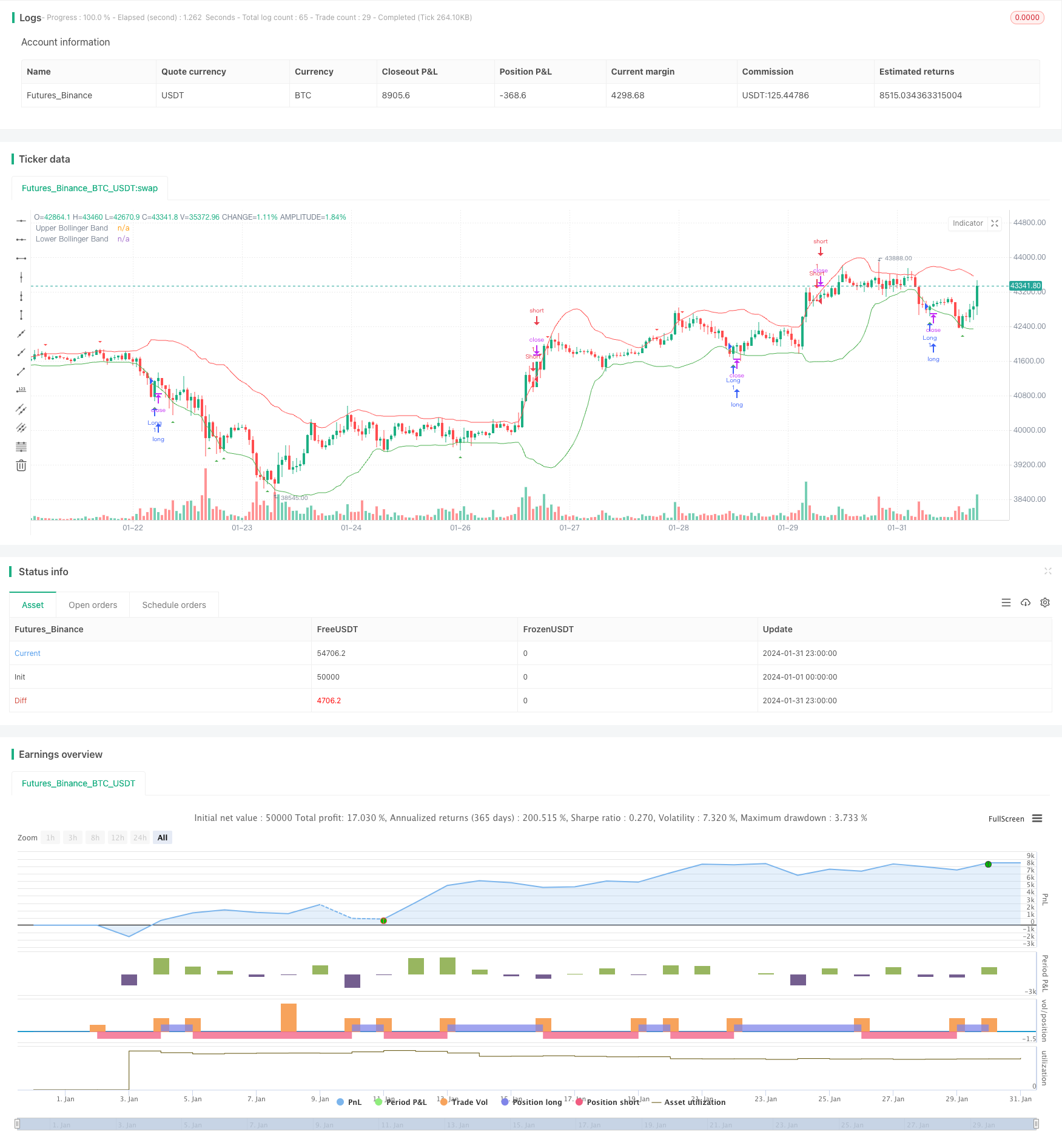
概述
这个策略基于Bollinger Bands指标展开短线交易,利用Bollinger Bands的上下轨提供突破买入和卖出信号,属于简单型动量追踪策略。主要适用于短线追踪,追捧价格趋势的交易策略。
策略原理
该策略主要依赖Bollinger Bands指标,Bollinger Bands包括中轨、上轨和下轨3条线。中轨线代表收盘价的N日简单移动平均线,上轨线由中轨线加2倍标准差计算,下轨线由中轨线减2倍标准差计算。当价格从下轨向上突破时生成买入信号;当价格从上轨向下突破时生成卖出信号。
该策略的主要交易逻辑是:
使用sma()函数计算收盘价的N日(默认20日)简单移动平均线作为Bollinger Bands的中轨线
使用stdev()函数基于收盘价计算N日(默认20日)标准差
中轨线±2倍标准差构成Bollinger Bands的上下轨
收盘价向上突破下轨时,产生买入信号
收盘价向下突破上轨时,产生卖出信号
使用plotshape等函数在K线图上标记买入卖出信号
策略优势
策略逻辑简单,容易理解运用
指标参数少,便于优化调整
能够有效跟踪市场趋势,追捧动量
回撤风险较小
策略风险
容易产生错过反转的风险
参数设置不当可能导致交易频率过高
上下轨突破判断对市场波动较为敏感
效果与参数设置高度相关,需要谨慎测试优化
策略优化方向
调整Bollinger Bands的参数,优化移动平均线周期及标准差的倍数
结合其他指标过滤交易信号,避免错误交易
添加止损机制,控制单笔损失
不同品种、周期参数设置不同,需要分别测试
总结
该策略整体来说是一个非常典型且实用的短线动量追踪策略,通过简单的指标框架就能把握市场趋势,适合短线操作。但也存在一些缺点,如对参数敏感,信号过滤不足等问题。通过进一步优化指标参数,或加入其他辅助指标,可以提高策略的稳定性和收益率。
策略源码
/*backtest
start: 2024-01-01 00:00:00
end: 2024-01-31 23:59:59
period: 1h
basePeriod: 15m
exchanges: [{"eid":"Futures_Binance","currency":"BTC_USDT"}]
*/
//@version=4
strategy("arasmuz2.0", overlay=true)
// Bollinger Bands Parametreleri
length = input(20, title="Bollinger Bands Length")
mult = input(2.0, title="Multiplier")
// Bollinger Bands Hesaplamaları
basis = sma(close, length)
upper_band = basis + mult * stdev(close, length)
lower_band = basis - mult * stdev(close, length)
// Long (Alım) Koşulları
longCondition = crossover(close, lower_band)
// Short (Satım) Koşulları
shortCondition = crossunder(close, upper_band)
// Long (Alım) Giriş
strategy.entry("Long", strategy.long, when=longCondition)
// Short (Satım) Giriş
strategy.entry("Short", strategy.short, when=shortCondition)
// Al sinyalini mumun altına koy
plotshape(series=longCondition, title="Buy Signal", color=color.green, style=shape.triangleup, location=location.belowbar, size=size.small)
// Sat sinyalini mumun üstüne koy
plotshape(series=shortCondition, title="Sell Signal", color=color.red, style=shape.triangledown, location=location.abovebar, size=size.small)
// Bollinger Bands'ı Grafik Üzerinde Görüntüle
plot(upper_band, color=color.red, title="Upper Bollinger Band")
plot(lower_band, color=color.green, title="Lower Bollinger Band")